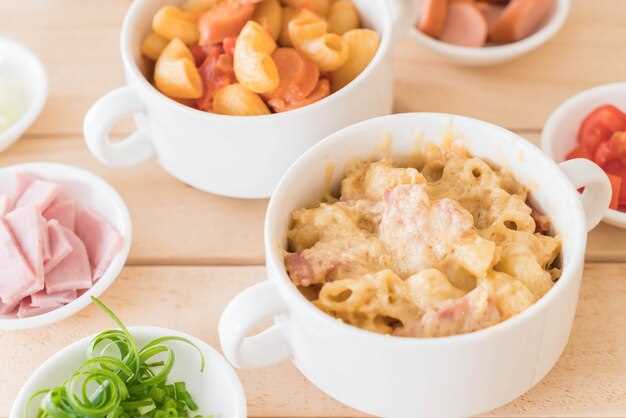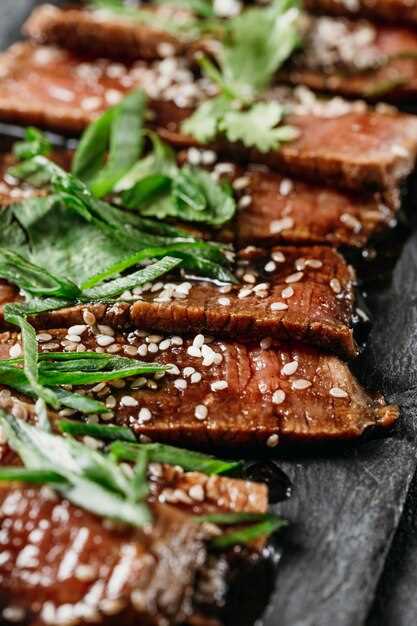Forget takeout! This guide provides a straightforward method to mimic the cherished creamy pasta dish adored by fast-food enthusiasts. Achieving a similar texture hinges on using a blend of sharp cheddar and Monterey Jack, plus a touch of evaporated milk for unparalleled richness. Expect this home-brewed version to be ready in under 30 minutes, a significant time-saver compared to restaurant trips.
The secret? A roux. Combining butter and flour creates a luscious base, preventing a grainy texture. Don’t skip the nutmeg; a pinch elevates the flavor profile, adding a subtle warmth often overlooked. For an authentic experience, consider adding a dash of cayenne pepper for a gentle kick. Prepare for a delightful culinary project!
Crafting a Creamy Cheddar Pasta Duplicate at Home
For optimal results, select sharp cheddar for a tangier flavor profile, or a blend of cheddar and Gruyère for depth. Use evaporated milk for a richer, smoother consistency compared to regular milk.
Essential Ingredients & Techniques
Use elbow noodles, cavatappi, or shells; cook slightly past *al dente* as the dish thickens while baking. Incorporate a roux, made with butter and flour, as a base for the cheddar sauce; this prevents a grainy texture. Season thoughtfully with smoked paprika, garlic powder, and a dash of cayenne pepper to mimic the signature savory taste. Ensure each noodle is fully covered in the creamy cheddar mixture before baking.
Baking to Perfection
Bake the assembled dish at 350°F (175°C) until golden brown and bubbly, approximately 20-25 minutes. Add a topping of crushed Ritz crackers mixed with melted butter for enhanced texture. Let stand for 5 minutes before serving to allow the cheddar to set slightly. Pro-tip: pre-shred your cheddar from a block; pre-shredded varieties often contain cellulose, hindering smooth melting.
Gather Your Ingredients: What You’ll Need
Sharp cheddar is key for the closest flavor approximation. Use a blend of aged cheddar and medium cheddar for depth.
| Ingredient | Quantity | Notes |
|---|---|---|
| Elbow Pasta | 1 pound | Cook al dente. |
| Sharp Cheddar | 8 ounces | Shredded. |
| Medium Cheddar | 4 ounces | Shredded. |
| Evaporated Milk | 1 (12 ounce) can | Full fat recommended. |
| Whole Milk | 1/2 cup | Adds richness. |
| Butter | 1/4 cup (4 tablespoons) | Unsalted. |
| All-Purpose Flour | 1/4 cup | For thickening. |
| Dry Mustard Powder | 1 teaspoon | Enhances the flavor. |
| Garlic Powder | 1/2 teaspoon | Adds savoriness. |
| Onion Powder | 1/2 teaspoon | Boosts flavor profile. |
| Salt | To taste | Adjust seasoning at the conclusion. |
| Black Pepper | To taste | Freshly ground, preferred. |
Step-by-Step: Cooking the Perfect Elbow Pasta with Creamy Cheddar Sauce
Achieve optimal sauce consistency by incorporating a roux. Combine 4 tablespoons of melted butter with 4 tablespoons of all-purpose flour over medium heat. Whisk constantly for 2-3 minutes, creating a smooth paste.
Elevating the Sauce Base
Gradually whisk in 2 cups of whole milk, continuing to stir until the mixture thickens. Avoid scorching by keeping the heat at medium-low. Add 1/2 teaspoon of salt, 1/4 teaspoon of black pepper, and a pinch of nutmeg for enhanced flavor.
Incorporating the Cheddar Goodness
Remove from heat. Stir in 8 ounces of freshly shredded sharp cheddar until fully melted and smooth. Using pre-shredded cheddar frequently results in a grainy texture due to cellulose additives. Consider adding a dash of hot sauce for an extra kick.
Perfect Pasta Preparation
Cook 1 pound of elbow pasta according to package directions. Drain thoroughly. Add the cooked pasta to the cheddar sauce, stirring to coat evenly. For a richer dish, consider baking the final product at 350°F (175°C) for 20 minutes with a breadcrumb topping.
Achieving the Popeyes Flavor: Key Techniques
Emulate the characteristic zest through precise spice combinations. Incorporate a blend of smoked paprika (1 tsp per pound of pasta), cayenne pepper (¼ tsp per pound), white pepper (⅛ tsp per pound), plus a pinch of onion powder for a savory depth. Adjust cayenne based on desired heat intensity.
Cheese Selection is Paramount
Mimic the texture using a combination of sharp cheddar (60%) for its bite and Monterey Jack (40%) for its melt. Pre-shredding the cheddar is recommended, as pre-shredded cheese often contains cellulose, which can inhibit a fully smooth outcome. If pre-shredded is used, add a tablespoon of cornstarch to the cheddar prior to incorporating it into the molten mixture.
Elevated Dairy Details
Substitute half-and-half for whole milk. The increased fat content contributes to a richer, creamier final product. Incorporate a tablespoon of unsalted butter per serving just before serving for heightened gloss and luxurious mouthfeel.
Troubleshooting: Common Mistakes & How to Avoid Them
Grated cheddar doesn’t melt smoothly? Toss it with 1 teaspoon of cornstarch per cup before adding it to the sauce. This prevents clumping.
Sauce is grainy? Avoid overheating the dairy base. Maintain a low, gentle heat when incorporating the milk and processed cheese spread. If graininess persists, whisk vigorously or use an immersion blender briefly.
Dish is too dry? Add a splash of milk (whole milk is best) 1 tablespoon at a time until desired consistency is achieved, after baking. Alternatively, increase the initial liquid amount by 1/4 cup.
Baked pasta is bland? Use sharp cheddar rather than mild. A touch of cayenne pepper (1/4 teaspoon) adds a subtle kick. Consider using a bouillon cube for extra flavor in the sauce.
Noodles are mushy? Cook the elbow macaroni slightly under al dente. They will continue to cook in the oven within the sauce.
Avoiding a Runny Final Product
Ensure your roux (butter and flour mixture) is properly cooked. It should be smooth and slightly golden before adding liquids. An uncooked roux will result in a thin, watery sauce. Measure ingredients precisely, particularly liquids. A digital scale for solids ensures accuracy.
Preventing Scorched Top
Bake at a lower temperature (325°F/160°C) for a longer time, approximately 35 minutes. Cover the casserole dish with foil during the initial baking period (first 20 minutes) and remove it for the last 15 minutes to allow browning.
Serving Suggestions: Pairing Your Cheddar Pasta Creation
Consider pairing this creamy pasta dish with crispy fried chicken tenders for a satisfying Southern-inspired meal. The richness of the cheesy pasta complements the savory, crunchy chicken. Alternatively, try it alongside grilled shrimp skewers for a lighter, seafood-centric experience.
For a vegetarian option, serve it as a side to black bean burgers or add some chopped roasted vegetables, such as broccoli or bell peppers, directly into the pasta for added texture and nutrition.
Spice enthusiasts might enjoy a dash of hot sauce or a sprinkle of cayenne pepper on top. A side of tangy coleslaw offers a refreshing contrast to the heavy pasta dish.
A simple green salad with a vinaigrette dressing provides a light and refreshing counterpoint to the richness. Think about a crisp arugula salad with lemon vinaigrette.
Q&A:
Can I make this Popeyes Mac and Cheese copycat recipe ahead of time? How long will it last in the fridge?
Yes, you can prepare this Mac and Cheese in advance. Store it in an airtight container in the refrigerator for up to 3 days. Reheat thoroughly before serving. Note that the texture might change slightly, becoming a bit drier upon reheating, so you might want to add a splash of milk or cream during reheating to restore its creamy consistency.
I don’t have Velveeta cheese on hand. Can I substitute it with another type of cheese, and if so, what would you recommend?
While Velveeta provides a unique creamy texture and melt, you can substitute it. A good alternative is a combination of cheddar and cream cheese. Use a ratio of approximately 3 parts cheddar to 1 part cream cheese. This will give you a similar flavor profile and creamy consistency. Avoid cheeses that don’t melt well, such as feta or paneer.
My Mac and Cheese turned out too thick. How can I thin it out without ruining the flavor?
If your Mac and Cheese is too thick, gradually add milk or cream, one tablespoon at a time, until you reach your desired consistency. Stir well after each addition. You can also use a little bit of pasta water (the water you cooked the macaroni in), as it contains starch that will help bind the sauce and maintain a smooth texture. Be careful not to add too much liquid at once, as this can make the sauce too thin.
I’m trying to reduce my sodium intake. What adjustments can I make to the recipe to lower the sodium content without sacrificing flavor?
To reduce the sodium in this recipe, there are a few adjustments you can consider. First, use low-sodium or no-salt-added broth or stock. Second, use reduced-sodium cheese. Third, omit or significantly reduce the amount of salt you add, tasting as you go to ensure the flavor is still to your liking. You can enhance the flavor with other herbs and spices like garlic powder, onion powder, or a pinch of black pepper.
I want to make a larger batch for a potluck. Can this recipe be easily doubled or tripled, and will the cooking time change?
Yes, this recipe can be easily doubled or tripled to serve a larger crowd. When doubling or tripling the recipe, ensure you use a pot large enough to accommodate all the ingredients. The cooking time for the macaroni pasta won’t change. However, you might need to increase the time to melt the cheese sauce, especially if you’re making a larger batch. Keep a close eye on it and stir frequently to prevent scorching. The baking time, if applicable, may also need to be slightly extended; check for doneness by inserting a knife or fork into the center – it should come out clean.



